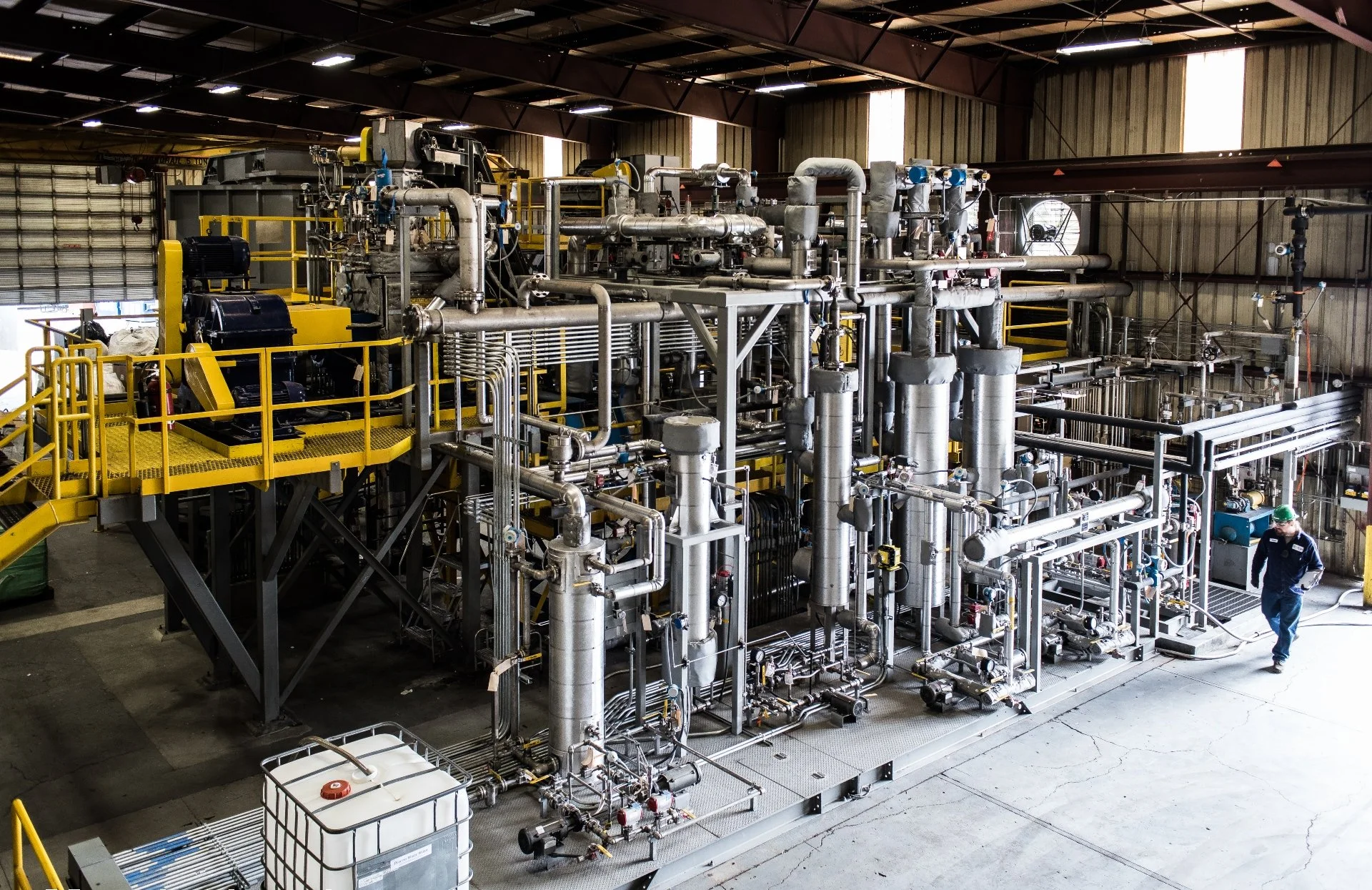Chemical Recycling: A Game-Changer for Hard-to-Recycle Plastics
The Future of Chemical Recycling: Opportunities and Challenges for MRFs
The recycling industry is evolving to meet the growing challenge of processing hard-to-recycle plastics—materials that traditional recycling methods often fail to handle efficiently. At the forefront of this evolution is chemical recycling, a cutting-edge approach that breaks down plastics into their fundamental building blocks, enabling the creation of new, high-quality materials. While mechanical recycling remains the backbone of most Material Recovery Facilities (MRFs), chemical recycling offers an unprecedented opportunity to recover value from plastics previously destined for landfills. However, with these opportunities come challenges that MRFs must navigate carefully.
This article provides a comprehensive look at how chemical recycling works, its potential benefits, and the role MRFs can play in this growing sector.
What Is Chemical Recycling?
Unlike mechanical recycling—which grinds, melts, or shreds plastics into lower-grade products—chemical recycling breaks down plastics at the molecular level using advanced chemical processes. This method can convert even highly contaminated or multi-layered plastics into valuable raw materials, such as monomers or synthetic oils, that can be used to manufacture virgin-quality plastics.
Key Types of Chemical Recycling Technologies:
1. Pyrolysis: Involves heating plastics in the absence of oxygen to produce synthetic oils and gases, which can be refined into fuels or chemical feedstocks. Pyrolysis is commonly used for mixed and hard-to-recycle plastics, such as plastic films and packaging.
2. Depolymerization: Breaks down polymers into their monomers, allowing them to be re-polymerized into new plastics. Depolymerization is especially effective for PET (used in bottles and packaging) and nylon.
3. Solvolysis: Uses chemical solvents to dissolve plastics and separate reusable components from contaminants. This method is useful for multi-layered plastics, such as those found in food packaging.
Why Chemical Recycling Matters for MRFs
Chemical recycling presents a significant opportunity for MRFs to expand their capabilities, reduce landfill contributions, and boost revenue streams. Hard-to-recycle plastics—including films, flexible packaging, and #3–#7 resins—are often rejected by mechanical processes. Instead of being sent to landfills, these materials can be sold as valuable feedstock for chemical recycling facilities.
Key Opportunities for MRFs:
• New Revenue Streams: Rather than paying disposal fees for non-recyclable plastics, MRFs can monetize these materials by supplying them to chemical recycling plants.
• Higher Market Demand: As consumer goods companies seek to meet sustainability goals, the demand for chemically recycled content is rising, creating new buyer markets.
• Reduced Landfill Costs: Diverting non-recyclable plastics reduces landfill expenses and supports environmental compliance goals.
Challenges of Chemical Recycling for MRFs
Despite its promise, chemical recycling presents several hurdles:
• Material Preparation: Chemical recyclers require feedstock to meet specific purity and composition standards. MRFs may need to improve their sorting and contamination control processes.
• Supply Chain Complexity: Chemical recycling facilities often require consistent volumes of feedstock. MRFs must carefully coordinate material flows to maintain reliable supply chains.
• Capital and Operating Costs: Chemical recycling plants are capital-intensive, which makes partnerships essential for MRFs that want to enter this market without making significant investments in infrastructure.
The Regulatory Landscape
Legislation is beginning to recognize chemical recycling as part of the circular economy. According to the American Chemistry Council, several U.S. states have passed laws classifying chemical recycling as a manufacturing process rather than waste management. This classification supports innovation and investment in advanced recycling technologies and opens up new opportunities for MRFs to work with certified chemical recyclers.
Case Study: A Real-World Example of Success
A mid-sized MRF in California partnered with a chemical recycling facility that specializes in pyrolysis to process plastic films and multi-layered flexible packaging. Over 12 months, the MRF diverted 1,200 tons of material that would have otherwise been landfilled. The result: $180,000 saved in disposal fees and $250,000 in revenue from feedstock sales. This partnership not only increased the MRF’s profitability but also positioned it as an environmental leader in its region.
Practical Steps for MRFs to Leverage Chemical Recycling
1. Develop Partnerships with Chemical Recyclers: Identify companies that accept your material streams and establish agreements on pricing, feedstock requirements, and delivery schedules.
2. Invest in Advanced Sorting Technology: Optical sorters and AI-assisted systems can accurately identify and separate plastics that are suitable for chemical recycling.
3. Train Staff and Suppliers: Ensure that team members and collection partners understand which plastics can be directed to chemical recycling to minimize contamination.
4. Pilot Programs: Start small by launching a pilot program to understand the logistics and economics of supplying chemically recyclable feedstock before scaling operations.
The Future Outlook: Why MRFs Should Prepare Now
Chemical recycling is poised to grow as technological advancements make it more scalable and cost-effective. The demand for chemically recycled content is also increasing as more global brands set ambitious goals to include recycled material in their products. MRFs that prepare now by forming partnerships, upgrading sorting capabilities, and understanding feedstock requirements will be well-positioned to capitalize on this growing demand.
Conclusion
Chemical recycling offers MRFs a pathway to recover value from plastics that have long been viewed as waste. By diversifying their operations and building relationships with chemical recyclers, MRFs can expand their revenue streams, reduce their environmental impact, and strengthen their role in the circular economy. At Midas Peak, we are committed to helping MRFs navigate market changes and seize new opportunities. Contact us today to learn how chemical recycling can fit into your business strategy and unlock new levels of profitability.

